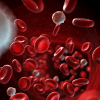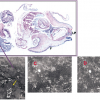John P. Hammond
Technical Manager, Starna Scientific Limited, 52–54 Fowler Road, Hainault, Essex IG6 3UT, UK
DOI: https://doi.org/10.1255/sew.2022.a23
© 2022 The Author
Published under a Creative Commons BY-NC-ND licence
Introduction
Over the last eighteen months in this series of articles1–9 we have explored many of the Quality aspects associated with the application of spectroscopy in regulated environments, and how these have evolved in the Four Generations discussed.
Now, in this last article in the series, having brought us up to date in these areas of interest, let us “Cross the Rubicon” and hypothesise on just where events will take us into the 5th Generation.
This might be simply described as personal Crystal Ball gazing, no pun intended, however, before we discuss the 5th Generation of the Quality aspects discussed in this series, let us consider the above title.
“…science fiction or science fact?”
and a few everyday examples where indeed fiction has become fact. Blue text is taken from the previous column articles.
Science fiction or science fact?
This series has been based on a chronological timeline from 1940 to the present day, and within this timeframe consider these three examples from the Star Trek series, first screened in 1966, and from an iconic sci-fi film from 1968, where fiction has now become fact.
Star Trek Communicator: If memory serves, characterised by a five-note audio sequence when opened, and a flip-top cover, this design of effective communication was replicated by the modern flip-phone design. Whilst this phone design was superseded by the rise of the touchscreen App-based smartphone, as technology has moved on, it has reappeared again in the latest version of the Samsung Galaxy Z Flip4.
Star Trek Tricorder: A device that records vital signs by close proximity contact? Modern smart watches will report pulse, blood pressure etc. and even Electrocardiogram (ECG) data to an associated App. Also, invaluable in reporting blood oxygen saturation levels in the COVID-19 pandemic, the Pulse Oximeter, rather appropriately to this journal, uses visible (650 nm) and near infrared (950 nm) optical measurements to calculate this vital life sign.
Talking/Handheld Computer: Introduced in the original Star Trek series by the haunting phrase ‘…working!’ when questioned, and who can forget the HAL 9000 computer in Stanley Kubrick’s classic 1968 film 2001—A Space Odyssey. Now we are all fully familiar with Android tablets, or Apple iPads and the associated Alexa/Siri voice controllers, depending on your preference.
5th Generation: where next for the concepts discussed in the series chapters
Having shown that “fiction” can indeed be turned into “fact”, let us now summarily review each of the articles in the series and suggest a 5th Generation for each, with a summary conclusion at the end.
Chapter #1: definition of quality
“In business, engineering, and manufacturing, quality has a pragmatic interpretation as the non-inferiority or superiority of something; it’s also defined as being suitable for its intended use while satisfying customer expectations. Quality is a perceptual, conditional, and somewhat subjective attribute and may be understood differently by different people. Consumers may focus on the specification quality of a product/service, or how it compares to competitors in the marketplace. Producers might measure the conformance quality, or degree to which the product/service was produced correctly. Support personnel may measure quality in the degree that a product is reliable, maintainable, or sustainable.” Wikipedia
5th Generation
As stated in this article:
“…one of the aethereal considerations of quality, that one would hope is the outcome of commitment to a policy of ‘quality first’, and which will be discussed in the final Chapter in the series.”
Now we are here, what of the “quality first” policy, will it survive into this generation?
We would suggest that the answer is self-evident in the fact that both this Quality Matters column exists, and this series of articles has been produced; and new areas of interest continue to boil to the surface of this cauldron of Quality Matters, on a regular basis.
Chapter #2: ISO
This article concentrates on the International Organization for Standardization (ISO) organisation, its standards and their place within the Quality environment. By definition, it discusses the role of ISO in the administration and control of these standards and their evolution and harmonisation into the standards currently in existence. This article will not discuss the specific application of ISO/IEC 17025 and ISO 17034 in association with ISO/REMCO, and accreditation authorities in the implementation of these standards; this aspect will be covered in the next article in the series.
5th Generation
ISO have their “Strategy 2030”, “…Making lives easier, safer and better”, which can be found on their website (https://www.iso.org/strategy2030.html), and a summary of which is available from https://www.iso.org/files/live/sites/isoorg/files/about%20ISO/strategy/download/ISO%20Strategy-Snapshot.pdf, and outlines the pivotal role of this International organisation in the future.
Chapter #3: Accreditation standards and their role in quality assurance
This article reviews the two principal ISO 17000 series accreditation standards, namely ISO/IEC 17025 and ISO 17034, their impact on the associated Quality Assurance, Testing or Calibration Laboratory and historically how these standards have evolved and continue to be implemented. In addition, this article discusses the role(s) of the ISO 9000 series and ISO 17000 series support standards within this controlled environment. It introduces the ISO Technical Committee, ISO/REMCO, which has supported this evolution/development. This Reference Material committee, now formally reorganised by ISO as TC 334, will be reviewed and discussed in the next article in the series. As we shall see, the “Don’t risk it” message is a common theme through this review and is explicitly addressed in the latest revision of ISO/IEC 17025.
5th Generation
In this generation we will undoubtedly see the production and certification of standards that address the production and use of Reference Materials designed to qualify normative properties, e.g. identification, and expand the arena of the qualitative value assignment and use into the equally important, or perhaps more so, qualitative determination of value.
Chapter #4: “Measuring Up”—new ISO committee for reference materials committed to excellence in accurate measurement results
This article, the fourth in the series, details the ISO technical committee that is responsible for Reference Materials (RMs) etc. This Reference Material committee, formally ISO/REMCO, has now been reorganised by ISO as TC 334. The history of ISO/REMCO is discussed, together with the probable changes in this technical committee brought about by its conversion to TC 334.
5th Generation
In this next generation we will see the completion of the conversion of all the existing guidance documents into formal standards with all the regulatory emphasis that this process implies and deserves. With this structure in place one of the primary tasks will be to promote this quality system to other specific regulatory environments, e.g. Pharmaceutical. Why—because from a personal perspective, all the “...do you have?” quality questions being asked on the numerous Quality Questionnaires we are being asked to complete can be answered by the same universal response:
“…yes, established under the requirements of our ISO standard(s)”.
Chapter #5: GxP pharmaceutical quality assurance, an alternative track?
This article, the fifth in the series, details the history and evolution of the GxP Quality Assurance environment, used exclusively in the pharmaceutical and related support industries. In the above acronym, x = L or M, relating the Good Practice to either the “Laboratory” or “Manufacturing”, amongst others.
5th Generation
In the 4th Generation, it was significant, and a major step forward in all aspects of harmonisation of international standards, that the USA FDA chose ASTM International as the vehicle to produce a series of standards for pharmaceutical manufacturing, and committee E55—“Manufacture of Pharmaceutical and Biopharmaceutical Products” was established.
Now fully established, with a comprehensive range of associated standards, it is significant that the following statement below is rated #1, in the referenced industry trends in 2022, and undoubtedly will need E55, and the industry in general to address these issues?
1. Pharmacovigilance market will scale up
Medicines and vaccines often have undesirable and unexpected side effects. This treacherous tendency calls for more emphasis to be made on the drugs’ quality and the aftermath of their usage. So, here comes pharmacovigilance from the Greek word Pharmakon meaning a medicinal substance and the Latin word Vigilia meaning to keep watch. It is a set of scientific activities for preventing adverse drug effects and other medicine-related safety problems. Its ultimate goal is to optimize the benefit-risk ratio of healthcare products usage by sharing accurate information with patients and health care professionals.10
Chapter #6: Key Quality Indicators and their impact on the associated environments
Having now established two of the principal tracks with respect to the quality systems in use, this article, the sixth in the series, focuses on some of the specific Quality “tools” in use in both the ISO and GxP environments; how these are defined, applied and used; and how these have evolved with time. In addition, the crossover, with respect to these specific concepts, is investigated by the use of the adoption/exchange in each environment, e.g. Qualification from GxP being implemented in ISO labs, and vice versa, the use of Expanded Uncertainty Budgets from ISO being used in updates to pharmaceutical standards etc. As we shall see, this process began in earnest at the end of the last millennium and continues, evolves and accelerates to this day.
The key quality “tools”: Traceability, Validation Qualification and Calibration (VQC) and Uncertainty of Measurement.
5th Generation
As succinctly stated in this article, in this generation the use of these fundamental tools of Traceability, Validation Qualification and Calibration (VQC), and Uncertainty of Measurement will still be essential, and continue to evolve.
Chapter #7: A new approach
As stated in the last article, this article marks a change in this series because from this point forward, we will concentrate on specific areas of interest in the Quality environment in which we are/will be working in the future.
As an unexpected consequence of the COVID-19 Pandemic, the enforced isolation of the last two years has allowed time for reflection in all aspects of life. In the scientific area, the postponement or reassignment to virtual events of major international conferences, e.g. Pittcon 2022 at the time of writing this article, has prompted an explosion of on-line webinars, presentations etc. on a whole host of topics, and the Quality environment is no exception. Available to a much wider audience than by physical attendance at a conference, this “information explosion” in these areas of interest is summarised below and reinforced by the author’s direct involvement in these areas of interest.
Regular readers of this Quality Matters column will be familiar with the regulatory environments and standards often discussed by the authors; and in that respect this series of articles is no different. Discussed below are two new areas of interest, their associated terminology, standards and guidance on the topic.
The “new” quality “tools” of Analysis of Risk and Lifecycle Management
Whilst neither of these concepts can be described as new in the fundamental definition of the term, their use and application in our areas of interest certainly is.
5th Generation
This generation will undoubtedly see these key concepts, introduced in the previous generation become required constructs and maintain the high-level shift of emphasis discussed in the final overview.
Chapter #8: Software and Data Integrity: an essential partnership?
As stated in the last article, we will now consider the essential component that controls our modern instrument systems and the associated concept of data integrity that is fundamental to the quality of the data being generated.
Researching this topic, as an article within this Four Generations series, confirmed my statement in the introductory article:
“As someone who has been involved with the science of analytical measurement and/or spectroscopy for the majority of my adult life, this period of reflection centred not only on the last 12 months, but importantly on the changes since I started in a QA laboratory many years ago.”
If I related this time frame specifically to the development and evolution of UV/visible instrumentation, once again the chronology of the software and data integrity can be effectively mapped to the timelines, and as in many technical areas impacting on our modern lives, there is the interesting conversion of analogue to digital electronics. For a more detailed insight into this electronic transition of our scientific instrumentation, no pun intended, see the detailed discussion below.
5th Generation
One of the hot topics in the current (4th) generation, Data Integrity will continue to be fundamentally required and challenged in the next generation, particularly with the move to “cloud”-based storage solutions, and we may see introduction of Blockchain approaches to address some of the issues raised.
Chapter #9: A spectroscopic trio
In the last article, we concentrated on how the “screwdriver in the spectroscopist toolkit” the UV/visible spectro(photo)meter, and its associated software has evolved during our Four Generations. In this article we’ll now look at three other related spectroscopic techniques/tools in the box, namely, Fluorescence, near infrared (NIR) and Raman; and discuss the “what”, “where” and “how” of these techniques are being used to improve the quality of the measurement processes associated with them.
This article, therefore, uses the Four Generations in the previously described time periods and does uncover some interesting points for discussion. This chronology effectively plots the evolution of these techniques from Research to Analytical Quality Assurance (QA), and the associated Quality requirements associated with them.
5th Generation
The use of these spectroscopic techniques will continue to evolve into new application areas in the clinical and biochemical fields, accelerated by the recent global pandemic and on-going related situations.
5th Generation: Overall summary
In all aspects of the evolution of any of the topics discussed in this series, the overall and structural aspect of the change can be succinctly described as a movement from a one-off or batch, to a continuous or at very least cyclic process; with the appropriate quality checks and balances clearly evident and available to prove and verify the desired control.
In many environments, the availability of appropriate integrity data should also provide sophisticated trend analysis to produce a proactive, rather than a reactive response to a perceived risk.
No doubt, in a few years’ time it will be interesting to review this article, and
“…see how the pot has boiled?”
References
- J.P. Hammond, “Four generations of Quality: into the future”, Spectrosc. Europe 33(2), 32–35 (2021). https://doi.org/10.1255/sew.2021.a10
- J.P. Hammond, “Four generations of quality: International Standards Organization (ISO)”, Spectrosc. Europe 33(3), 22–27 (2021). https://doi.org/10.1255/sew.2021.a15
- J.P. Hammond, “Four generations of quality—‘Don’t risk it’ Accreditation standards and their role in quality assurance”, Spectrosc. Europe 33(4), 25–30 (2021). https://doi.org/10.1255/sew.2021.a19
- J.P. Hammond, “Four generations of quality: ‘measuring up’”, Spectrosc. Europe 33(5), (2021). https://doi.org/10.1255/sew.2021.a24
- J.P. Hammond, “Four Generations of Quality—GxP pharmaceutical quality assurance, an alternative track?”, Spectrosc. Europe 33(6), 29–33 (2021). https://doi.org/10.1255/sew.2021.a28
- J.P. Hammond, “Four Generations of Quality: key Quality Indicators and their impact on the associated environments”, Spectrosc. Europe 33(8), 39–42 (2021). https://doi.org/10.1255/sew.2021.a57
- J.P. Hammond, “Four generations of quality: a new approach”, Spectrosc. Europe 34(1), 40–44 (2022). https://doi.org/10.1255/sew.2022.a4
- J.P. Hammond, “Four Generations of Quality: software and data integrity—an essential partnership?”, Spectrosc. Europe 34(2), 30–35 (2022). https://doi.org/10.1255/sew.2022.a7
- J.P. Hammond, “Four Generations of Quality: a spectroscopic trio”, Spectrosc. Europe 34(4), 42–45 (2022). https://doi.org/10.1255/sew.2022.a13
- I. Kruglyak, Pharma will Innovate and Prosper Further: Top 10 Pharmaceutical Industry Trends in 2022. Avenga (2022). https://www.avenga.com/magazine/pharmaceutical-industry-trends/

John Hammond
John Hammond is an experienced analytical scientist, spectroscopist and technical marketing professional, skilled in the development, production and marketing of analytical systems into highly regulated and controlled industries. A Fellow of the Royal Society of Chemistry (FRSC), executive member of ISO/TC334 and an Expert Advisor to the United States Pharmacopeia, General Chapters, Chemical Analysis committee.
[email protected]






